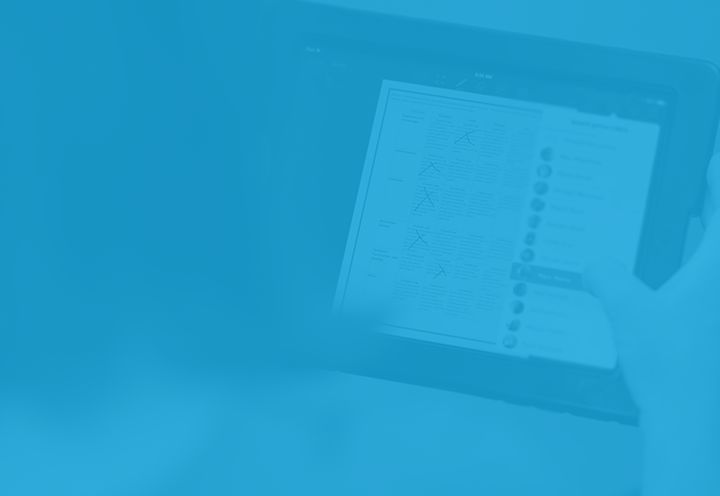Written by our team of Learning Specialists, this blog post is the second instalment of a four-part Back to School series on putting the DNA of Learning to work in Showbie.
When was the last time you were taught a new skill? Something tangible which someone showed you how to do and you then managed to do for yourself?
Recently, I was patiently taught how to tie a clove hitch knot – something which I’m sure I should already know how to do having been on many camping holidays! I watched carefully as I was shown how to do it (repeatedly!), got frustrated whilst trying to follow along (repeatedly!) but finally managed to achieve it on my own. I was struck by what a perfect example this was of the ‘I do, we do, you do’ approach used by teachers across the world.
‘I do, we do, you do’ is something I’ve been talking to schools and trusts about a lot recently, exploring how technology can positively impact all three of these stages in different ways as the learning sequence moves from direct instruction and guided practice, to independent practice. Different schools describe those different elements using different terminology, and of course there are plenty of other pedagogical approaches which also have an impact on effective teaching and learning, but one of the things which seems consistent is the sometimes tricky migration from guided to independent practice.
No matter how well teachers introduce a new concept, expertly narrate their thought processes or explain an idea or task as part of direct instruction, there will always be students for whom everything seems to drop out of their head as soon as they move from guided practice to independent practice; those students who need a little extra support or need things re-explained, just as I did learning to tie knots.
For these students (and probably for all of us at one point or another) ‘I do, we do, you do’ is not a one way, linear process. As every teacher knows, it’s often much more flexible than that; students will often move into independent practice before needing to return to elements of guided practice or direct instruction. Often, this results in a delay in learning, an unmanageable demand on teacher time, or students ploughing on regardless and consolidating misconceptions in an effort to simply complete the assigned task in the allotted time.
This is one place where Showbie can really make a difference on teaching and learning. By simply adding short, teacher created videos to Showbie assignments, and making these available to those students who need a ‘temporary support that is removed when it is no longer needed’ (Five evidence-based strategies, EEF 2020), teachers are able to minimise delays and disruption to learning with little additional demand on teacher time. Making this teacher-created digital content available to students can free teachers up to identify and address more complex needs in their classroom, such as asking robust questions to elicit misconceptions or support students engaged in collaborative learning. Moreover, Showbie’s differentiated distribution feature allows teachers to quickly and easily personalise instruction with videos available only to those students who need them, and just for the amount of time needed for them to move from feeling helpless to a level of desirable difficulty, without over-scaffolding.
From here, Showbie goes further; empowering students to more effectively demonstrate their learning, easily engage with the teacher and content, and confidently explore their learning during their independent practice. Showbie’s intuitive assignment timeline creates a space for 1:1 learning. Moreover, flexible annotation tools empower learners to share their knowledge and practice concepts in the way that works best for them, be it digital ink, voice notes, uploading images with Showbie’s scan feature, posting video recordings, or using text or comments boxes. With everything all in one place students can easily access personalised or class-wide resources as they need and refer to material as they need in order to support their learning, and educators can view the students learning progress over time or support them in addressing misconceptions.
And it doesn’t stop there. Showbie on iPad allows students to multi-task, viewing those videos using split-screen as well as Apple’s Picture in Picture feature to both view, pause and scroll through a video whilst being able to fully interact with the task in hand using Showbie’s creative annotation tools or powerful apps such as Keynote, GarageBand or iMovie. Those same models and scaffolds can be repeatedly accessed by students as part of spaced retrieval practice or when revisiting prior learning, and can easily be shared with other classes and in future years. Of course, there’s a huge variety of scaffolds which students benefit from – posters, prompt cards, diagrams, knowledge organisers, vocabulary boards – and all of these can be shared with those students using differentiated distribution just as easily.
When learning to tie a clove hitch, I was lucky enough to have a 1:1 teacher with all the time in the world to show me how to do something over and over again, as often as I needed. Whilst it would be great if that was the case in every classroom in the world, technology offers teachers a unique opportunity to effectively clone themselves – or at least their guidance and expertise – to give personalised support to many students at the same time.
 Craig Thompson has over 20 years of experience in education as a primary school teacher, deputy head and digital learning specialist. Throughout his career, Craig has helped schools, trusts and local authorities to develop and realise their vision for education technology.
Craig Thompson has over 20 years of experience in education as a primary school teacher, deputy head and digital learning specialist. Throughout his career, Craig has helped schools, trusts and local authorities to develop and realise their vision for education technology.


